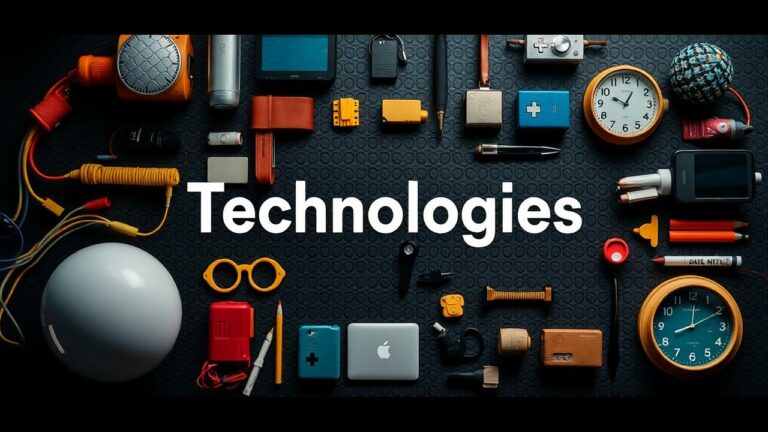Product development technology
Importance of User Experience (UX)
User experience—oh, how crucial it is! It’s like the secret sauce that can make or break a product’s fate in the wild marketplace. Think about it: customer satisfaction and retention are intricately woven into the fabric of UX. When designers anchor their work around users’ actual needs and desires, magic happens! A delightful user journey doesn’t just create loyal fans; it sparks word-of-mouth buzz that can catapult a brand to new heights. On the flip side, if users encounter frustration? Well, that’s an express lane to abandonment city—a direct hit on market performance.
Now, here’s where things get even more interesting: honing in on user experience isn’t merely fluff—it’s a savvy strategy for dodging pitfalls during development. By weaving user feedback into every phase of creation—earlier and often—teams can sniff out usability hiccups before they ever see the light of day. This cycle of iteration doesn’t just polish up product quality; oh no! It also trims down those lengthy timelines and slashes costs tied to fixes after launch has come and gone. Embracing UX isn’t just smart; it’s foundational for sparking innovation and crafting strategic plans in the whirlwind world of product development!
UX Design Tools and Best Practices
Designers wield a diverse arsenal of tools to amplify the user experience throughout product development. Picture this: wireframing and prototyping software like Sketch and Figma, granting teams the power to visualize intricate user interfaces while diving into a whirlpool of iterative testing. These digital canvases don’t merely serve as sketches; they become collaboration hubs where designers, developers, and stakeholders converge, crafting vivid representations that illustrate how users will tango with the final product. And let’s not overlook usability testing platforms—UsabilityHub springs to mind—where real users lend their voices directly, ensuring every design choice resonates harmoniously with the intended audience.
Embracing best practices in UX design is crucial for conjuring effective digital products. Imagine incorporating user research right from the start—a strategic move that empowers teams to pinpoint user needs and uncover pain points before they spiral into bigger issues down the line. Consistent design patterns emerge as guiding lights, fostering familiarity that smooths out any learning curve for users navigating through your creation. Engaging in regular user testing during development doesn’t just validate those bold design concepts; it peels back layers to reveal hidden areas ripe for enhancement. Together, these strategies weave a tapestry of a user-centered approach—one that elevates satisfaction and ignites engagement with the final offering!
| Tool | Purpose | Benefits |
|---|---|---|
| Sketch | Wireframing and Prototyping | Allows for collaborative design and easy iteration |
| Figma | Design Collaboration | Real-time collaboration and vector graphics editing |
| UsabilityHub | Usability Testing | Collects user feedback early in the design process |
| InVision | Prototyping and Feedback | Transforms static designs into interactive prototypes |
| Miro | Collaboration and Brainstorming | Visual planning and teamwork across remote teams |
Leveraging Data Analytics
Data analytics dances at the heart of refining the product development journey, an intricate waltz that organizations are increasingly drawn to. They delve into data like treasure hunters, unearthing insights on user behavior, keeping a keen eye on market shifts, and pinpointing golden opportunities for enhancement. By gathering and dissecting information from a kaleidoscope of sources—each more revealing than the last—teams forge decisions steeped in relevance, aligning closely with what users crave and what the market demands.
This sharp focus doesn’t just streamline offerings; it deftly trims back the risks lurking in development’s shadows, ensuring resources swirl efficiently rather than scatter aimlessly. As companies weave data analytics into their decision-making fabric, they unlock doors to staying competitive in a rapidly evolving landscape. Armed with sophisticated analytical tools capable of sifting through mountains of data, they unveil striking patterns that illuminate customer preferences and usage quirks.
By grasping these underlying currents, product development teams can sculpt features and functionalities that resonate deeply with users’ desires. In this dynamic interplay between insight and strategy lies an opportunity for organizations to enhance adaptability—a crucial trait in today’s fast-paced world—ultimately birthing innovative solutions poised to tackle real-world challenges head-on.
Data-Driven Decision Making in Development
Integrating data analytics into the product development journey catapults decision-making prowess to new heights. Imagine this: by meticulously gathering and scrutinizing user data, organizations unlock a treasure trove of insights—customer preferences, behaviors, trends—all swirling in an intricate dance of information. This empirical goldmine empowers teams to spot improvement opportunities like hawks eyeing their next meal, prioritize features with laser focus, and craft products that resonate deeply with their target audience.
But wait! The magic doesn’t stop there. Relying on solid data effectively diminishes the risks typically tied to launching new products; decisions are now anchored in hard evidence rather than mere hunches or gut feelings.
And here’s where it gets even more exciting: data-driven decision-making cultivates a dynamic environment bursting with agility. Feedback isn’t just collected—it’s woven seamlessly into the development cycle like threads in a vibrant tapestry. This iterative process allows teams to pivot quickly, making savvy adjustments on-the-fly so that the end product aligns snugly with what users truly desire.
By harnessing metrics and analytics as guiding stars, organizations can break down silos between departments, streamline operations like well-oiled machines, and elevate both quality and success rates of their offerings in the bustling marketplace arena. These forward-thinking practices not only spark innovation but also lay down robust pathways for sustainable growth and heightened customer satisfaction—two vital ingredients for thriving amidst ever-changing landscapes!
Challenges in Product Development Technology
Steering through the intricate maze of technological advancements is no small feat for product development teams, who often find themselves grappling with a whirlwind of challenges. The tools and platforms evolve at breakneck speed, leaving team members in a fog of knowledge disparity that can stifle collaboration. On top of that, companies are caught in an endless tug-of-war between the relentless drive to innovate and the ever-looming specters of budget constraints and tight deadlines. This delicate balancing act frequently leads to compromises—those pesky trade-offs that can ripple into diminished product quality and shake user satisfaction.
But wait, there’s more! Adapting to the volatile tides of market demands throws yet another wrench into the works. Consumer preferences shift faster than you can say “trending,” making it absolutely vital for organizations to remain nimble in their developmental dance. And then there’s the conundrum: merging user feedback while trying not to lose sight of a cohesive vision for the product? Talk about conflicting priorities! Organizations must cultivate proactive strategies—not just reactive ones—to foresee changes on the horizon and pivot accordingly, ensuring their offerings stay not only relevant but also fiercely competitive amidst a crowded marketplace bursting at its seams.
Common Pitfalls and How to Overcome Them
In the labyrinthine landscape of product development technology, teams often stumble into a series of familiar traps that can stymie their forward momentum. One predominant snag is the glaring lack of communication among team members—a silent saboteur that breeds misalignment in goals and expectations. To counteract this, it’s crucial to forge clear channels for dialogue and implement regular check-ins; these practices can cultivate an atmosphere brimming with collaboration, where everyone remains harmoniously aligned. Furthermore, leveraging project management tools designed to illuminate every stage of the development journey can streamline workflows and catapult efficiency.
Yet another common hurdle lies in the oversight of user feedback during the developmental dance. When teams become ensnared by technical features at the expense of user experience, they run a substantial risk: crafting products that fall flat in meeting market demands. Establishing a robust feedback loop—one that actively solicits user insights throughout various phases—can safeguard against this pitfall, ensuring that each product maintains its focus on users’ needs. Employing techniques like usability testing or surveys offers invaluable perspectives, empowering teams to make thoughtful adjustments long before they unveil their creations to the world.
Future Trends in Product Development
Emerging technologies are on the brink of a seismic shift in product development processes, poised to ignite a revolution! Just imagine: artificial intelligence and machine learning seamlessly weaving into design frameworks, empowering teams to not just optimize functionality but also amplify user satisfaction like never before. Meanwhile, automation tools are swooping in to eliminate those monotonous tasks that drag down creativity—allowing designers and developers to unleash their full potential for innovative problem-solving! And let’s not overlook the explosion of collaborative platforms, which foster real-time communication among team members scattered across the globe. It’s breaking barriers like nobody’s business and ushering in an era of inclusivity in product creation.
Sustainability? Oh, it’s become absolutely vital—no longer just a buzzword—as consumers clamor for environmentally-friendly practices. Companies are diving headfirst into circular economy principles; think recyclable or biodegradable materials at every turn! This isn’t merely about appeasing consumer concerns; it’s also about meeting regulatory demands aimed at slashing waste and emissions. As organizations embrace these sustainable practices wholeheartedly, they’re not only likely to carve out a competitive edge but also contribute meaningfully to global environmental objectives. The future is now—and it’s looking green!
Innovations Shaping the Industry
The infusion of artificial intelligence (AI) into the realm of product development has sparked a revolution for countless organizations, flipping the script entirely. Imagine AI technologies as dynamic catalysts, revamping every nook and cranny of product design—from predictive analytics that deftly foresee market trends to machine learning algorithms sculpting user interfaces with uncanny precision. By tapping into this wellspring of AI prowess, companies are crafting products that not only respond but resonate with users on a personal level, drastically enhancing customer satisfaction while sharpening their competitive edge in the bustling marketplace.
Then there’s the meteoric rise of agile methodologies—a seismic shift advocating for iterative development and rapid prototyping like never before! This nimble approach empowers teams to pivot at lightning speed in response to ever-evolving customer feedback and shifting market dynamics. With collaboration and flexibility taking center stage, businesses can streamline their workflows—trimming down inefficiencies—and turbocharge their time-to-market. In such an unpredictable landscape, the ability to experiment boldly and adjust swiftly isn’t just beneficial; it’s absolutely vital for ensuring products don’t just survive but thrive amid relentless change!
- The integration of AI fosters enhanced data-driven decision-making processes.
- Agile methodologies promote a culture of continuous improvement and learning within teams.
- Predictive analytics allows businesses to better anticipate customer needs and preferences.
- Rapid prototyping facilitates faster testing of ideas, reducing the time it takes to bring products to market.
- Collaboration tools enhance communication among team members, leading to more innovative solutions.
- AI-driven user insights enable companies to create more personalized product experiences.
- The focus on flexibility allows businesses to adapt their strategies in real-time, staying aligned with consumer trends.
Case Studies of Successful Product Development
Delving into the labyrinth of real-world product development reveals a treasure trove of insights brimming with effective strategies and practices. Take Apple and Amazon, for instance—these giants have become paragons of customer-centricity in action. Apple’s iterative design process, fueled by an unwavering commitment to user feedback, has birthed groundbreaking products that resonate deeply with consumer desires. Meanwhile, Amazon’s relentless focus on data analytics empowers it to continuously refine user experiences, fortifying its formidable market stronghold.
Now consider Airbnb—a striking exemplar that turned the hospitality landscape on its head. Through meticulous user research and rigorous testing, this platform fine-tuned its interface like a master craftsman sharpening a blade; usability soared while user engagement skyrocketed. This agile approach not only allowed Airbnb to pivot deftly amid shifting market dynamics but also to stay in tune with ever-evolving user preferences. Such cases vividly illustrate that triumphant product development is not merely about wielding technological might; it hinges equally on deciphering user expectations and cultivating a vibrant culture of innovation.
Lessons Learned from Industry Leaders
In the ever-evolving landscape of product development, industry trailblazers have illuminated the vital role that iterative testing and user feedback play in shaping successful creations. Companies that embrace early and ongoing dialogue with their target demographics often find themselves poised to innovate like never before. With an agile mindset, these organizations can nimbly navigate the twists and turns of shifting market dynamics and user expectations. This remarkable ability to pivot based on stakeholder insights not only ensures products align with customer desires but often catapults them beyond mere satisfaction.
Equally crucial is the strategic integration of cross-functional teams right from the get-go. The most successful firms shatter those pesky silos by promoting collaboration among diverse groups—designers, engineers, marketers, and customer support staff all working hand-in-hand. This holistic strategy doesn’t just spark creativity; it turbocharges efficiency too! By harnessing a multitude of perspectives, companies are more adept at spotting potential hurdles early on, paving the way for richer solutions down the line. Prioritizing communication and teamwork can dramatically slash time-to-market while simultaneously elevating overall product quality—a winning formula in today’s fast-paced environment!
Conclusion
The ever-shifting terrain of product development technology underscores an undeniable truth: weaving user experience into the fabric of data analytics is not just important—it’s paramount. Companies that embrace UX design don’t merely create products; they craft experiences that strike a chord with consumers, igniting higher engagement and satisfaction levels like wildfire. When organizations harness the power of data-driven decision-making, they can meticulously fine-tune their development processes, syncing their offerings with the pulse of market demands and user inclinations.
Looking ahead, trends hint at a burgeoning focus on innovation within this dynamic industry landscape. As technology leaps forward at breakneck speed, adopting these advancements will be crucial for firms eager to stay in the game and retain their competitive edge. Grasping emerging challenges will arm professionals with the insight needed to deftly navigate complexities—transforming uncertainty into opportunity—and ensuring a seamless delivery of products that not only meet but soar beyond consumer expectations.







